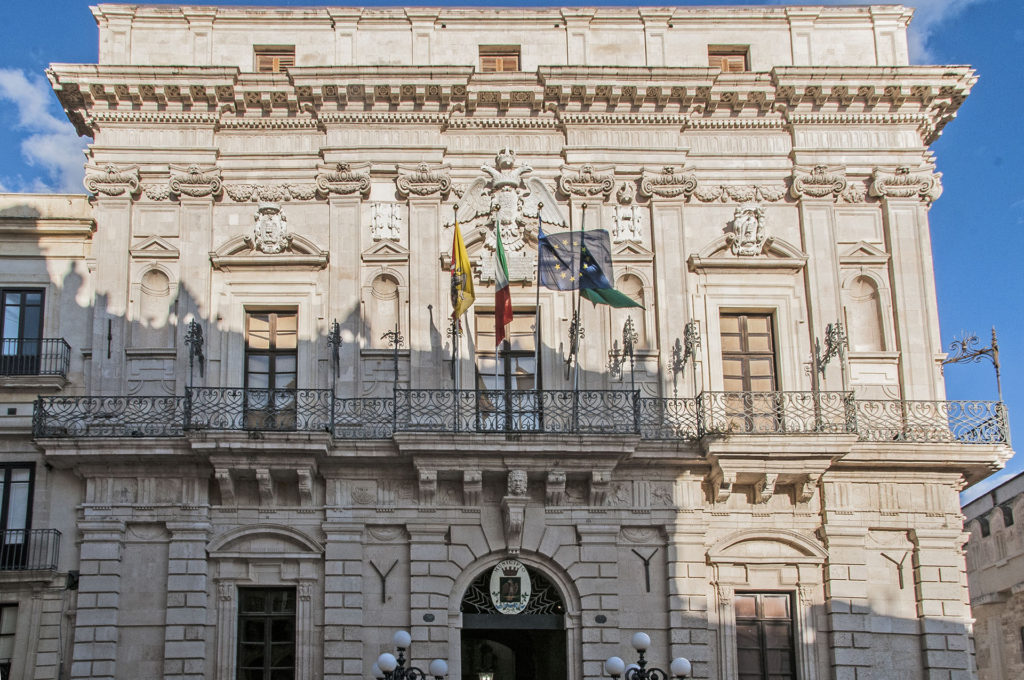The Senatorial Palace, also known as the Palazzo del Vermexio, named after the Spanish architect who built it, is currently the seat of the Town Hall.
Its construction dates back to 1622. In fact, in those years, the Senate of Syracuse decided to build a new palace next to the ecclesiastical buildings, whose seat was to be the city’s main square.
The project was entrusted to the architect Giovanni Vermexio, who at that point had designed almost all the buildings in the city of Syracuse.
 The palace features a fascinating mixture of styles that combines Renaissance elements and hints of Baroque.
The palace features a fascinating mixture of styles that combines Renaissance elements and hints of Baroque.
In fact, the palace was originally a perfect cube, split in half by a long balcony that separated the two levels stylistically.
The lower part, very linear and in Renaissance style, enriched by pilasters, half columns against the walls and decorated with
bossage
, contrasts with an upper level that is more lavish and richly decorated, which begins with a balcony in Baroque style. Finally, the façade houses the sculpture of the twoheaded imperial eagle, with two counterposed heads separated by the neck. In the left corner of the cornice of the palace, the architect Vermexio sculpted a tiny
lizard
that represents his signature.
In the basement there are the remains of an Ionic temple, belonging to the ancient sacred area of the
Arthemision
.